Exploring Cologne & the Rhine Valley
This post may contain affiliate links to products or services I'm happy to recommend. If you click on an affiliate link and then make a purchase, Artsy Traveler may earn a small commission at no cost to you. Thank you!
Visit the Rhine Valley with its castles and charming villages to steep yourself in fairy-tale Germany. Take a cruise along the most scenic part of the Rhine between St. Goar and Bacharach, catch a concert of medieval music at the castle in Bacharach, and dine on spaetzle and local white wine while watching the Rhine boats slide past.
Spend a few days enjoying lively Cologne with its awesome cathedral and world-class Roman museum, hop over to Bonn to visit Beethoven, and meander up the Mosel to cute Cochem and beyond to Trier. You can easily spend a week or longer in this scenic area of Germany.
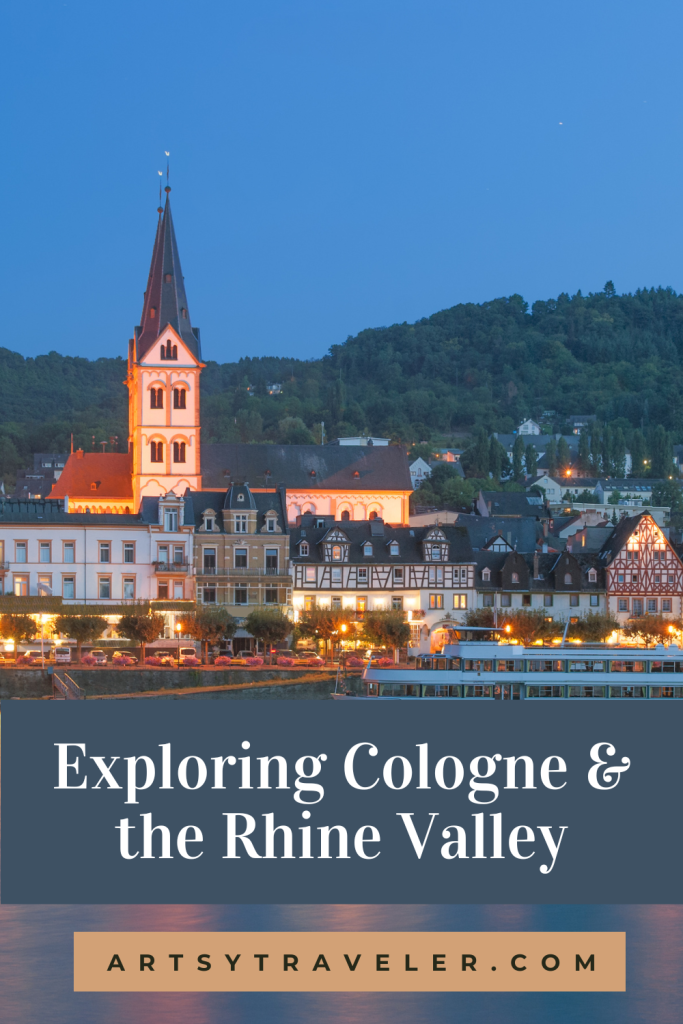
Getting Around the Rhine Valley
The Rhine Valley is easiest to enjoy with a car. Distances are short, and the driving isn’t too frantic, although the traffic in Cologne and Bonn can be heavy. On a recent trip to Bonn, we had to abandon our plan to revisit the Beethoven Museum because we couldn’t find a parking spot!
Public transit is efficient in this area. Take a train from Cologne upriver to Bonn, then another train to St. Goar. From there, take a short Rhine cruise to Bacharach or as far as Bingen. Catch the train back to where you plan to stay (Bacharach and St. Goar are great choices).
If you’re driving and want to experience a short Rhine cruise, stay the night overlooking the river in St. Goar, then catch the K-D Rhine boat to steam upriver to Bacharach. After checking out this impossibly adorable town, hop on the train for the short trip back to St. Goar.
By boat, the journey from St. Goar to Bacharach along the most scenic stretch of the Rhine Valley takes about an hour. By train, the trip takes about 15 minutes.
Suggested Itinerary
If you’re driving, I suggest spending two nights in Cologne, three nights in Saint Goar or Bacharach to enjoy a Rhine cruise and to explore local castles, then either two nights in Cochem to explore the Mosel Valley or a visit to Trier with its excellent Roman ruins and charming town center.
If you’re traveling by train, explore Cologne, take the train to Bonn, then continue to St. Goar. Take the boat down the Rhine to Bacharach, stay a night or two, then get back on the boat to travel to Koblenz. From there, catch a train to your next stop in Germany.
Map of the Rhine and Mosel Valleys
Refer to the map below as you plan your Rhine and Mosel itinerary.
Days 1 and 2: Cologne
We really enjoyed Cologne (Köln). Situated on the Rhine River, the city has a walkable old town, an impressive cathedral, a state-of-the-art concert hall and art museum, and our favorite Roman museum.
The city was pretty much bombed flat in the war, with most of the city rebuilt in modern style and one neighborhood—the old town a few blocks south of the cathedral—rebuilt in the old style. We stayed in this area, steps from the walkway bordering the Rhine.
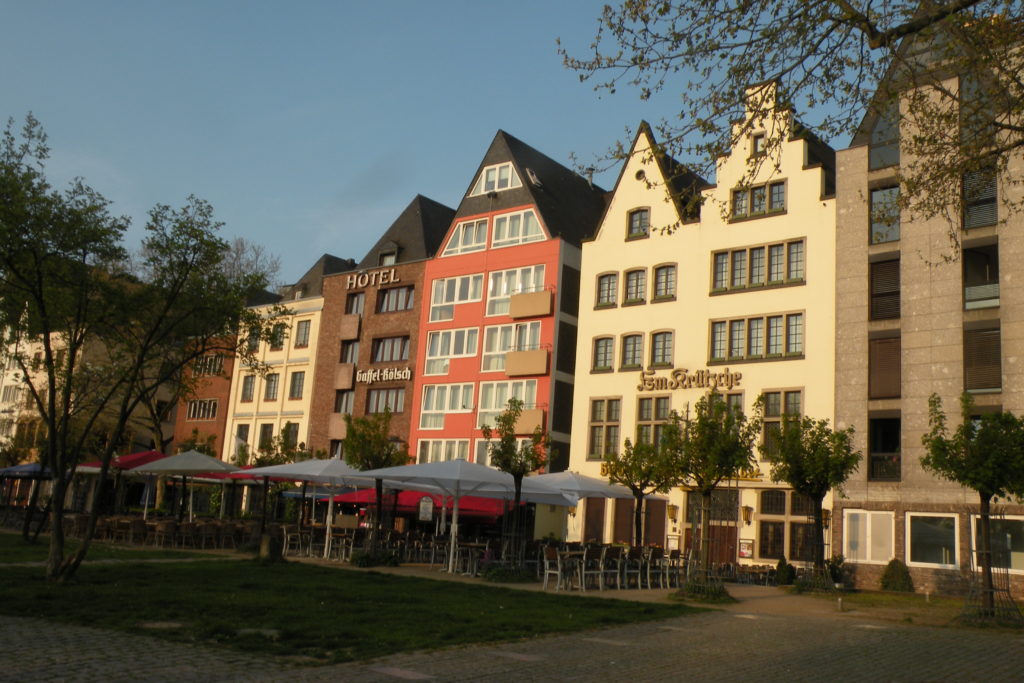
On our visit to Cologne, we were invited to a family birthday party for an artist friend of Gregg’s. Everyone spoke English, and copious glasses of Kölsch were downed (especially by me).
Kölsch is a local beer brewed only in Cologne and served in a tall and skinny 20-cl “Stange” glass. I’m not a huge beer lover, but I did enjoy my (many) glasses of Kölsch at that birthday party.
When you’re in Cologne, make sure you sample a glass or three of Kölsch.
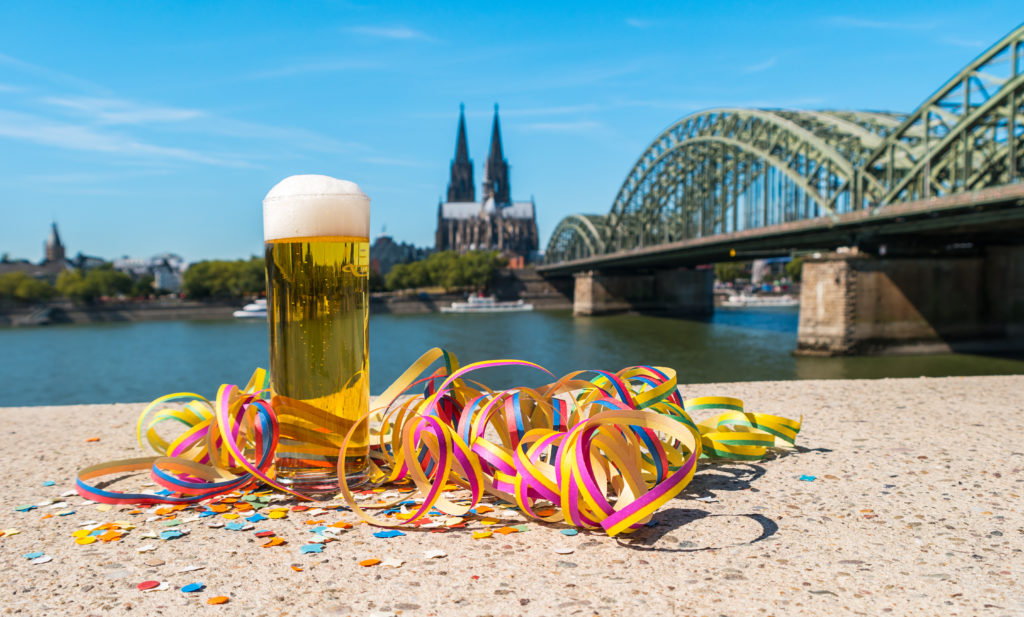
Cologne Cathedral
If you arrive in Cologne by train, you can’t miss the cathedral. Step out of the station and look up, waaaay up, to see Germany’s largest Gothic cathedral looming above you. During the Second World War, the cathedral was hit by 15 bombs, but, remarkably, the medieval structure more or less held.
Lots of stained glass and a massive 140-foot tall ceiling are gasp-worthy. Entrance is free.
According to Rick Steves, the one-hour English-only tour is “reliably excellent.” It runs Monday to Saturday at 10:30 am and 2:30 pm and on Sundays at 2:30 pm only.
Romano-Germanic Museum
I highly recommend the Romano-Germanic Museum (Römisch-Germanisches Museum). The collections are stunning, in particular the large collection of Roman glass vessels, jewelry, and mosaics.
In addition to Roman artifacts, you’ll see displays chronicling the archaeological heritage of Cologne from the Palaeolithic period to the early Middle Ages.
Museum Ludwig
The sleek, modern building next to the Romano-Germanic Museum is the Museum Ludwig. The museum holds an extensive collection of Pop Art, the third-largest Picasso collection in the world, seminal works from the Russian avant-garde, and an important collection of German Expressionists, including Otto Dix and Oskar Kokoschka.
Kölner Philharmonie
Get tickets for a performance at this modern concert hall located in the same complex as the Romano-Germanic Museum and Museum Ludwig. We visited the box office in the afternoon and purchased tickets for that evening’s performance of symphonic works.
Days 3 to 5: Rhine Valley
Leave Cologne in the morning and head to the Max Ernst Museum in Brühl, about a twenty-minute drive from Cologne on the way to Bonn. I write more about the museum in the Artsy Sightseeing section of the Germany page.
If you’re in the area, stop by to enjoy the excellent collection and lovely grounds.
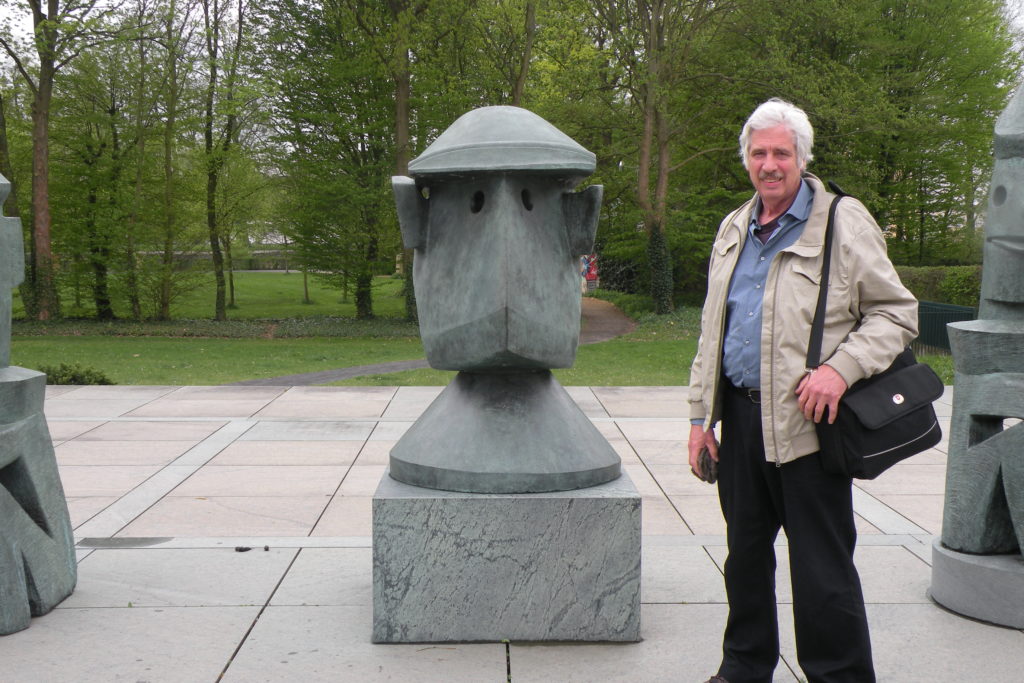
Pop into Bonn for lunch and a visit to the Beethoven Museum. Here, in the place where the maestro was born, you’ll get a strong Beethoven vibe. This museum is one of the world’s most popular music museums.
The museum features Beethoven’s manuscripts, a music room for regular concerts on historic keyboards, and a special area for temporary exhibits. The museum is open daily from 10 am to 6 pm.
If you’re traveling by train, you’ll easily be able to tour the Beethoven museum before getting back on the train to travel upriver to St. Goar.
Spend two or three nights in one of the towns along the Rhine. We stayed in St. Goar at a place overlooking the river.
An equally adorable choice is the town of Bacharach. I first stayed there when I was 18 in a tiny B & B with the date 1492 carved into the lintel over the door.
St. Goar
Splurge for a place overlooking the bustling Rhine. We spent a lot of time on the balcony of our riverside hotel, watching the little car ferry go back and forth across the rushing river.
The ferry set off bravely from the St. Goar side to be gripped seconds later in the watery clutches of a ferocious current. With a tremendous burst of power, the ferry turned 360 degrees across the river in a graceful arc and docked on the other side.
Every time the ferry crossed, we held our breath thinking it wouldn’t make it. Hours of fun!
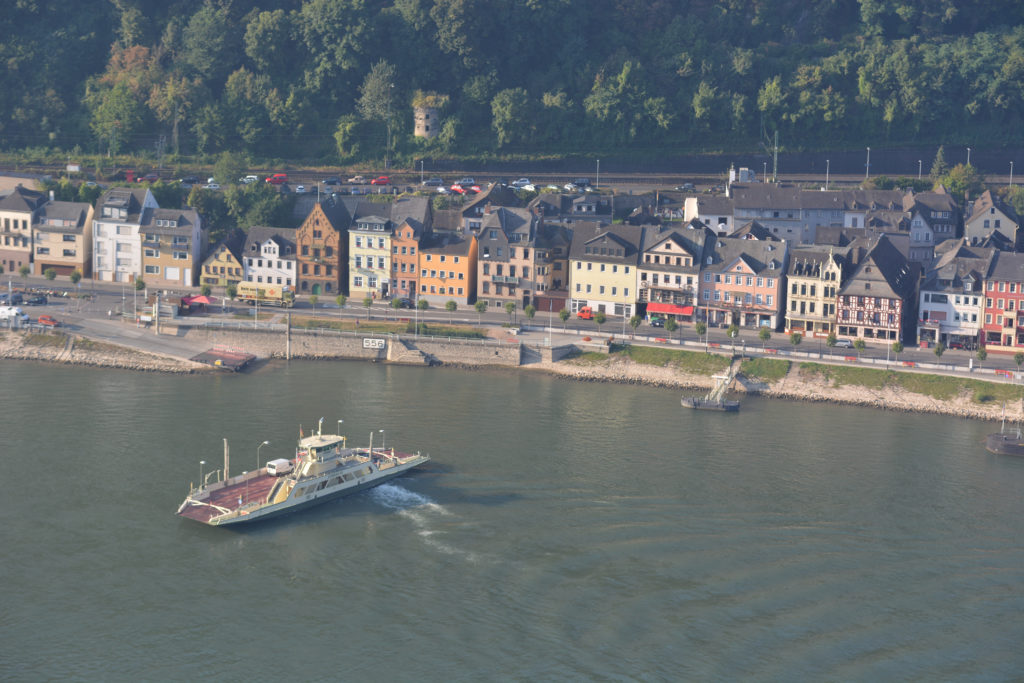
The big attraction in St. Goar is the Rheinfels Castle (Burg Rheinfels). Its grey and turreted bulk broods on a hill high above St. Goar.
Some consider it the best of the Rhine Valley castles. On a sunny day, the view is spectacular. If you visit, leave a comment below and let other Artsy Travelers know what you think.
Rhine Boat Trip
Go down to the dock for the Koln-Dusseldorfer (K-D) line and purchase a ticket to take you to Bacharach. You can check schedules and pre-purchase tickets online.
Buy the ticket that includes your train trip back to St. Goar. If the weather’s fine, sit on the open top deck and watch the castles go by.
On the day we took the cruise, the misty, drizzly weather was very Germanic-romantic.
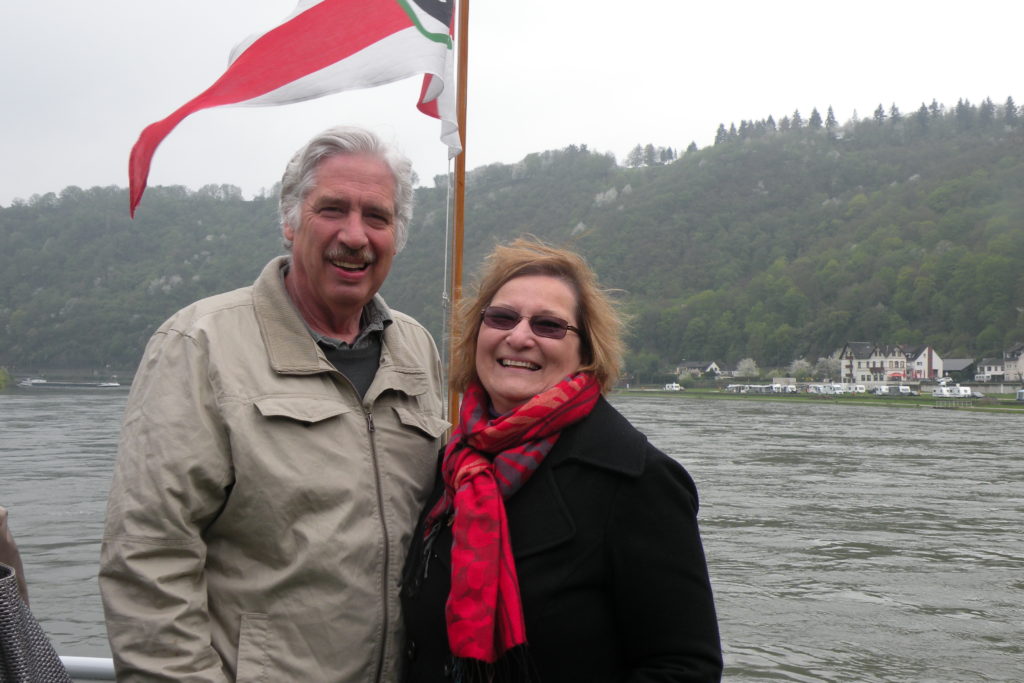
On the stretch between St. Goar and Bacharach, you’ll pass the famous Lorelei Rock, a sheet of slate towering over the narrowest point of the Rhine. You’ll hear the legend on the boat, so I won’t spoil it!
The boat provides indoor seating if the weather is iffy, and hot drinks and snacks are available.
Bacharach
What a cute town! Wander around the cobbled streets, admire the half-timbered houses, do a spot of shopping, eat a meal, and chill.
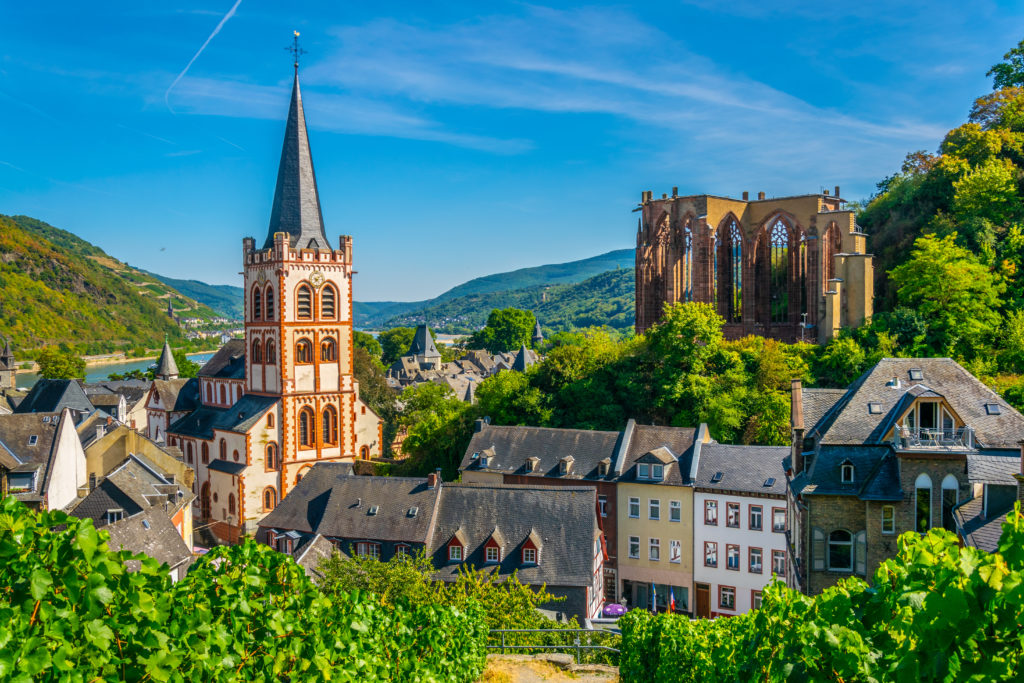
The castle on the hill overlooking Bacharach is a youth hostel and hosts a medieval music evening. Check local schedules for performance times.
Costumed performers showcase medieval instruments, and at the end of the performance a large portion of the audience gets up to shuffle through a guided version of an old German folk dance. I had a ball!
The Rhine Valley includes many more castles and the charming towns of Bingen (of Hildegard von Bingen fame) and Koblenz.
Days 6 and 7: The Mosel Valley & Trier
After exploring the Rhine Valley, consider traveling a bit farther southwest to the Mosel Valley. Wine from super-steep vineyards is the thing here. Drive along the twisting Mosel River, visit Burg Eltz, and stay in Cochem.
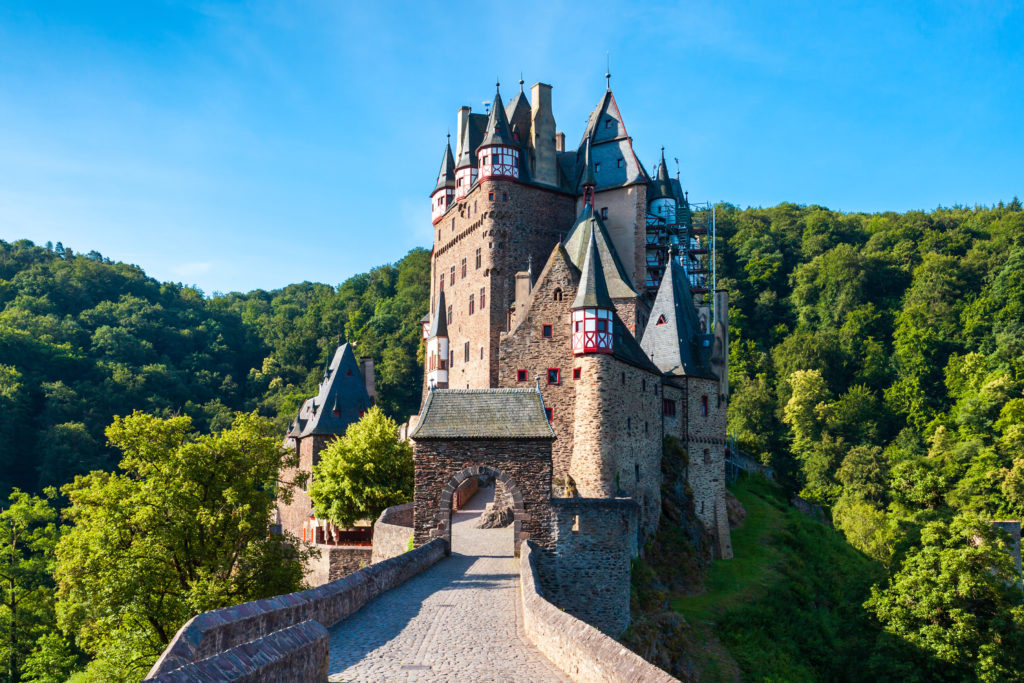
Burg Eltz is one of the superstars of German castles. Set in the middle of a forest, the castle is every kid’s dream of a foreboding fortress preparing to defend itself against marauding bandits.
The castle is over 850 years old and is largely intact, with the same family owning and caring for it since it was built. Tour sumptuously decorated rooms containing many original furnishings and check out the Treasury and Armory.
Another highlight of the castle is its location in the Eltz Forest, a nature reserve intersected with numerous hiking trails.
The castle gets crowded during the middle of the day, so consider visiting in the early morning or after about 3 pm when the tour busses start to trundle away. The castle will reopen on April 1, 2020.
Cochem
Cochem boasts a gorgeous castle (the Reichsburg Cochem) and lots of narrow streets lined with half-timbered houses. It’s pretty darned cute and a good place to stay while exploring the Mosel Valley and sampling the local wine.
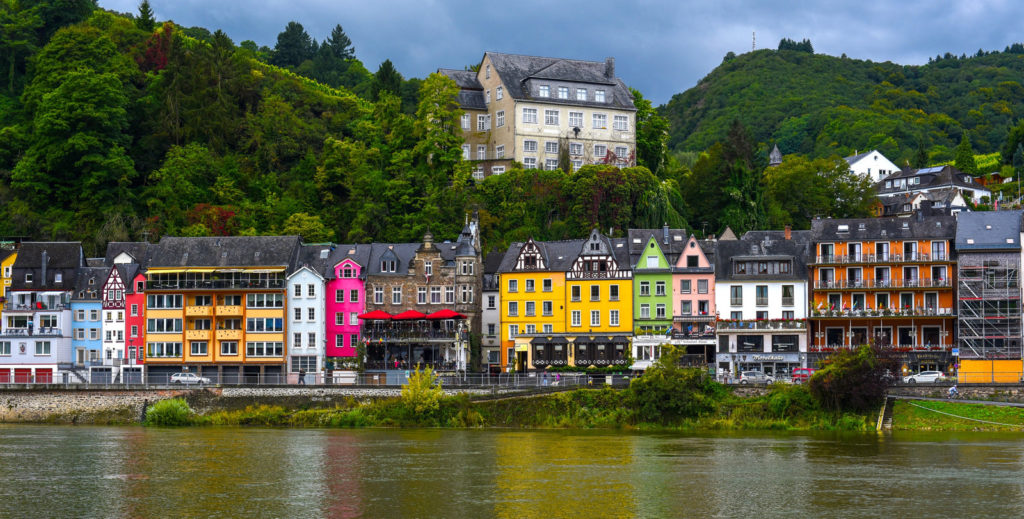
Have you stayed in Cochem? Share your experience with other artsy travelers in the Comments section below.
Trier
If you’re into Roman ruins, drive a little farther to Trier, which is Germany’s oldest city and the birthplace of Karl Marx.
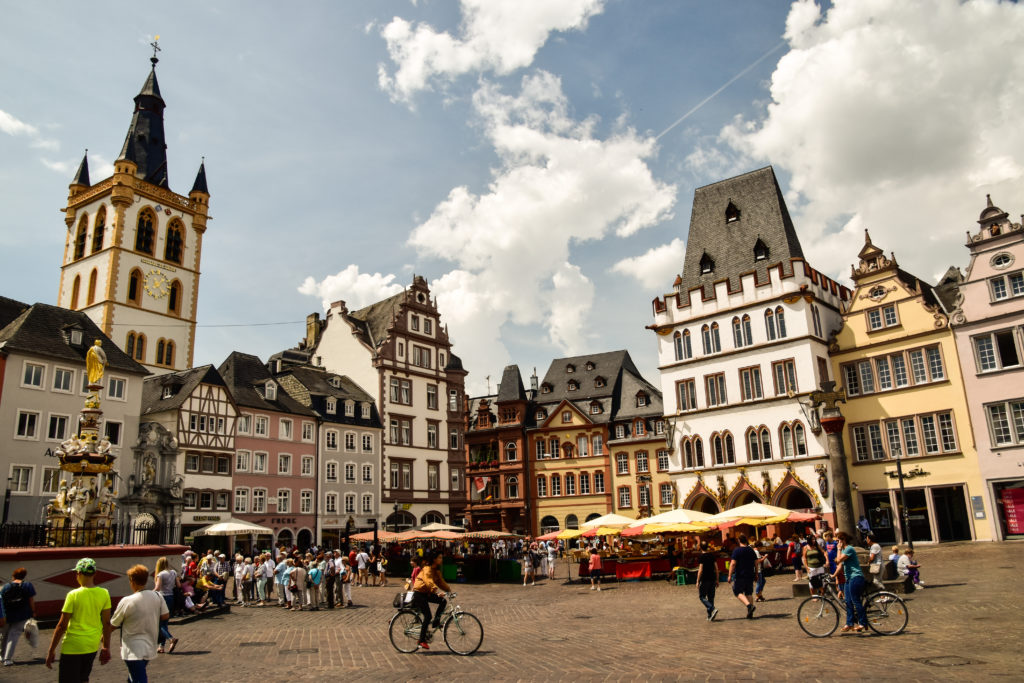
When we were in Trier in 2018, the town was about to celebrate the 200th anniversary of the birth of Karl Marx on May 5, 1818. A hot item in the stores was a yellow rubber duckie decked out like Karl Marx, complete with beard, a copy of Das Kapital clutched under one wing, and a quill pen in the other.
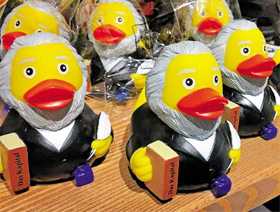
I wonder how the father of socialism would have felt seeing his birth so celebrated. On the other hand, I’m sorry I didn’t buy one.
Where to Stay in the Rhine Valley
For accommodation suggestions in Cologne, St. Goar, and Trier, see Where to Stay in Germany: My Best Picks.
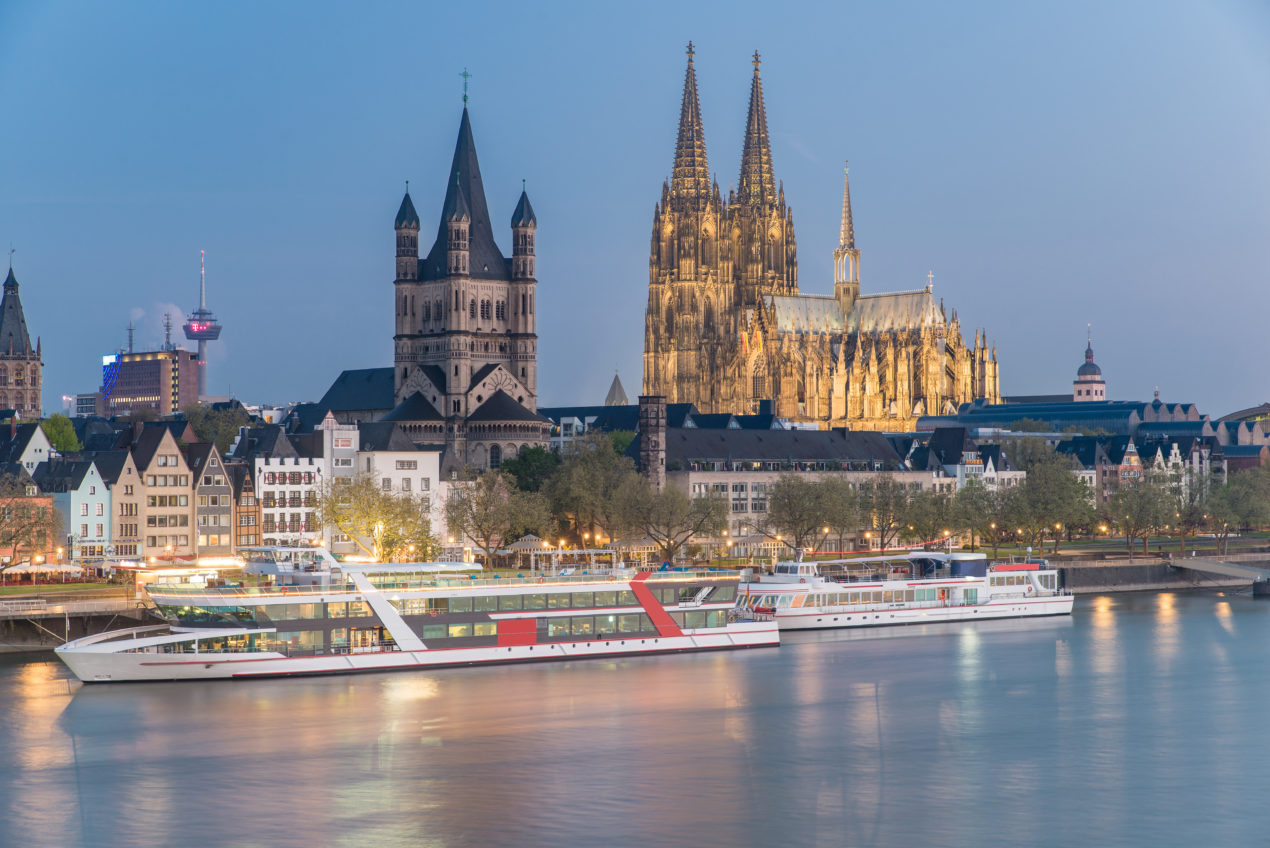
[…] Cologne & the Rhine Valley […]
[…] Exploring Cologne and the Rhine Valley […]